The lion is considered the second-largest cat in the world, after the tiger. Historically, lions roamed across Africa, Asia, and Europe, but today they are found only in parts of Africa and India. For centuries, lions have captivated human imagination as symbols of leadership and courage, earning the title “King of the Beasts.” They inhabit open woodlands and dense grasslands, which provide prey for the herbivores they feed on. Adult male lions are larger than females and are known for their impressive manes, which vary in color and size depending on the individual and their age. The mane provides protection from clawing during battles with other males over territory or mating rights.
Lions live in large social groups called prides, which range from 3 to 30 lions. These prides consist of females (lionesses) – including mothers, sisters, and cousins – along with their cubs and a few unrelated adult males. The relationships within a pride are very close, as outsiders are unlikely to be accepted. Males usually stay in the pride for a few months or years, while older females remain for life. The size of a pride depends on the habitat; in drier regions with less food, prides are smaller, and two females typically take responsibility for feeding the group. In areas with more food and water, prides can consist of four to six adult females. Lions use distinctive scents to mark their territory and warn other lions of their presence.
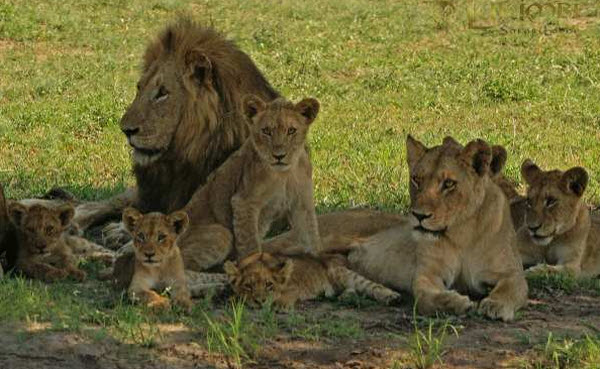
Living in a pride is advantageous for lions, as hunting in groups increases the chances of successful hunts and reduces the risk of injury. Researchers have observed that lions in a pride often exhibit contagious behaviors; if one lion yawns or roars, others will follow suit. Each member of the pride has a specific role: females collaborate in raising cubs and hunting, as their smaller size and agility make them faster and more efficient hunters. Young females chase prey towards the center of the hunting group, where older females lie in ambush and catch it.
Although it may seem that females do most of the work, males play a crucial role. Despite eating more and hunting less (only catching less than 10% of the prey), males patrol the pride’s territory and guard the cubs while females hunt. When a new male tries to join a pride, he must fight the existing males, which often results in either the new male being driven away or the existing males being ousted.
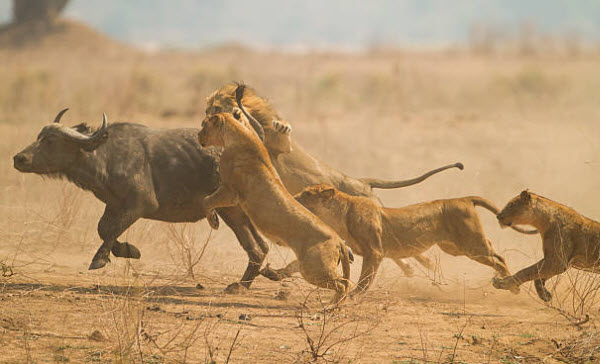
Lions’ lives are filled with sleep and relaxation. Over a 24-hour period, they have brief periods of intense activity followed by long stretches of rest, sometimes up to 21 hours. They are adept climbers and often rest in trees, possibly to catch a cool breeze or avoid flies. Lions may sleep in unusual positions, such as lying on their backs with their feet in the air. They are known for their distinctive roars, which males usually begin around one year of age, and females a few months later. Roaring serves as a form of communication, strengthens pride bonds, and signals territorial boundaries. Lions also use scent-marking by rubbing their noses on grass or shrubs and scratching the ground with their back claws, where scent glands are located. Males also spray urine to mark their territory.
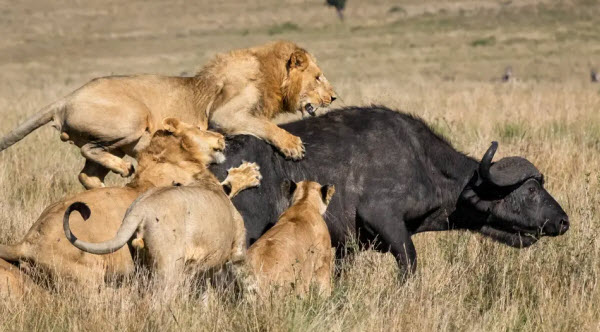
The lion’s primary habitat includes open woodlands and dense grasslands, which offer ample cover for hunting. These habitats also provide food for the herbivores that lions prey upon. Lions typically hunt at night, especially at dusk and dawn, with females doing most of the hunting. Lions can chase prey for distances up to the length of a football field in under six seconds, thanks to a specialized horizontal line of nerve cells in their eyes that enhances distance perception.
Lions’ prey mainly consists of antelopes, hoofed animals, young elephants or rhinos, as well as rodents, reptiles, insects, and even crocodiles. They often seek out prey or steal kills from cheetahs, hyenas, or African wild dogs, which digest their food quickly and need to hunt again soon.
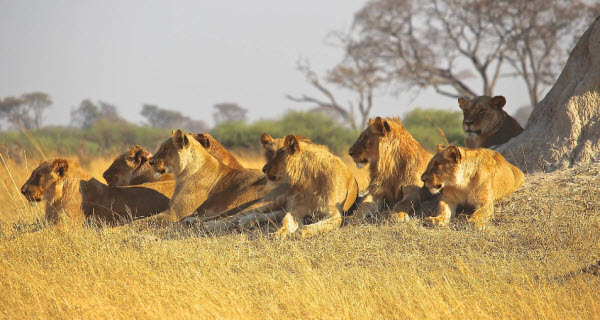
Females give birth in secluded locations away from the pride, with cubs initially covered in a brownish-yellow coat with dark spots or occasionally stripes. Cubs remain hidden for four to six weeks to gain strength and learn to walk and play. Once they return to the pride, they can nurse from any adult female, not just their mother. Typically, females give birth around the same time, providing cubs with numerous playmates.
Cubs born in a pride are twice as likely to survive compared to those born to a solitary female. However, when a new dominant male takes over a pride, he may kill cubs under one year old to sire his own offspring. Under favorable conditions, females can give birth approximately every two years. Cubs start following their mothers around three months of age and are weaned at six months. By about one year old, males begin developing a mane, signaling their transition to adulthood.
The length of time cubs stay with their mothers depends on their gender. Mothers generally rear males until they are about two years old, after which they are usually expelled from the pride. Males often form bachelor groups and work together until they are old enough to challenge older males for dominance. Female cubs typically remain in the pride and may stay with their mothers for life.
Lions not living in prides are known as nomads. They cover large distances following migrating herds and are usually young males wandering in pairs or small groups. Occasionally, females may also be nomadic. For unclear reasons, young females are sometimes expelled from their prides. As lions age and gain experience, nomadic males may challenge resident males for control of a territory or join nomadic females to form a new pride.
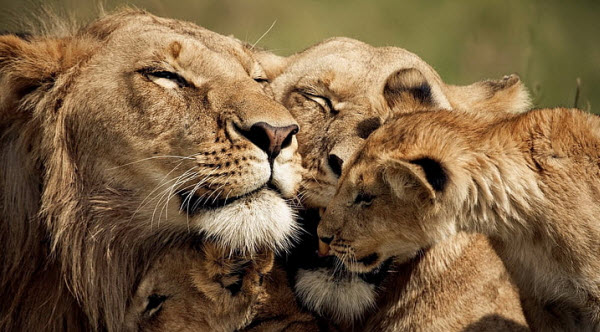
Due to various issues such as disease, human hunting, and habitat loss, lion populations in Africa are of serious concern to conservationists. The International Union for Conservation of Nature (IUCN) classifies lions as vulnerable, noting that most populations are declining at rates that meet the criteria for endangerment.
Lions now reside only in protected areas, and their movement through prides is increasingly restricted. While lion hunting is banned in many African countries, it remains permitted in others. Some lions live in such small areas that wildlife rangers often place females on birth control to limit cub numbers. Occasionally, livestock owners poison lions that prey on their herds. Estimates suggest there are between 6,000 and 10,000 lions in Africa, while the Asiatic lion, found in India, numbers only about 400 to 460 individuals, more than half of whom live in the Gir Forest National Park, formerly a royal hunting ground. The remainder reside in zoos.
Identification Card
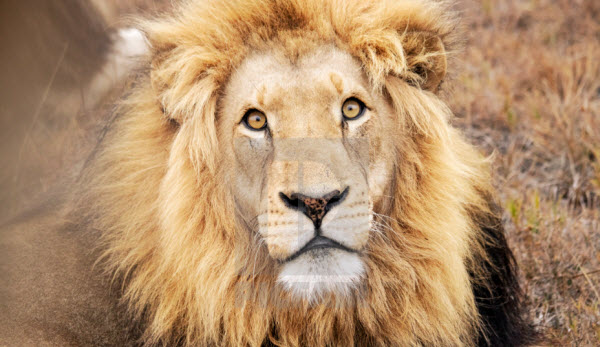
- Class: Mammals
- Order: Carnivores
- Family: Felidae
- Species: Lion
- Lifespan: In human care, females live an average of 17 years, and males live 11 to 13 years.
- Gestation Period: Four months
- Birth Weight: 1.4 kilograms
- Maturity: 3 to 4 years
- Length: Females measure 1.4 to 1.7 meters, males 1.7 to 2.5 meters.
- Weight: Females weigh 122 to 180 kg, males 150 to 260 kg.
- Tail Length: 70 to 105 cm
Quick Facts About Lions
- A male lion can eat up to a quarter of its body weight (up to 63 kg) in a single meal.
- A lion’s roar can be heard up to 4.8 kilometers away.
- Females can run at speeds of up to 53 kilometers per hour.
- Females often strangle their prey by pinning their jaws on its nose and mouth.
- Scientists know more about lions than any other cat species.
- Lions can survive in extreme drought conditions by eating watermelons for hydration in the Kalahari Desert.
